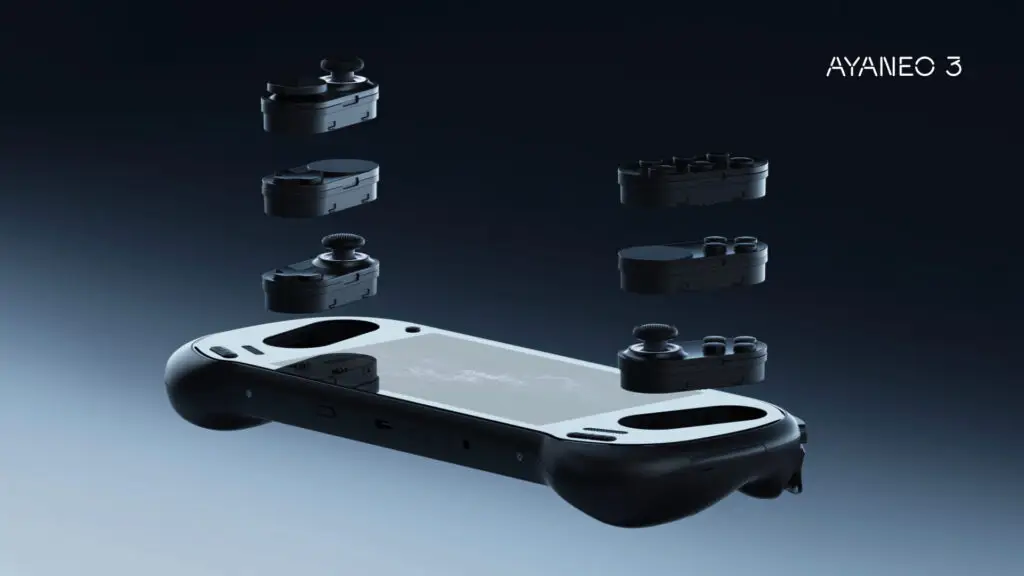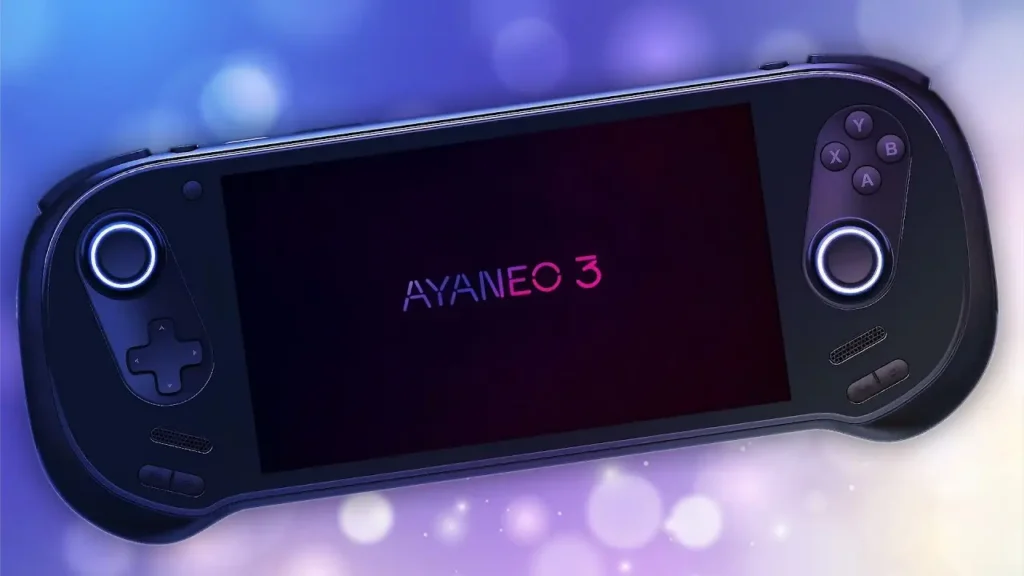The Ayaneo 3 marks the 15th handheld release from the company, following the Ayaneo 2S and 1S. Although it brings notable upgrades, including impressive gaming performance, it still struggles with recurring flaws familiar to those acquainted with the brand’s devices. To make matters worse, Windows continues to prove itself a clunky partner in the handheld space, often disrupting the user experience.
Despite these drawbacks, the Ayaneo 3 is not a failure. When focused purely on its primary function—gaming—it performs well. Unfortunately, nearly every new idea or feature introduced brings a complication, often due to the accompanying software.
AyaSpace 3: A Mixed Bag
The latest iteration of Ayaneo’s software, AyaSpace 3, shows genuine improvement. It is more responsive and easier to navigate compared to its predecessor. The interface now includes clearer labeling and better translations. Unlike AyaSpace 2, which often conflicted with Steam Input or attempted to override controller functions, AyaSpace 3 includes a warning about its “Game Mode” interfering with other input systems and allows for quick toggling.

Still, launching games is relatively straightforward with the Ayaneo 3. Most users will spend time customizing their layouts through the sidebar menu, which is essential when swapping out controller modules.
Technical Specifications
- Processor: AMD Ryzen AI 9 HX 370
- GPU: Integrated AMD Radeon 890M
- RAM: 16 GB LPDDR5x-7500
- Storage: 1 TB (upgradable to 2 TB)
- Display: 7-inch OLED touchscreen, 144 Hz refresh rate (LCD option available)
- Controls: Hall effect analog sticks, dual touchpads, gyroscope, back paddles
- Connectivity: 2x USB4, 1x OcuLink, 3.5 mm audio jack, Micro SD slot, Wi-Fi 6E, Bluetooth 5.2
- Battery: 49 WHr
- Dimensions: 289.8 x 115 x 22.4 mm
- Weight: 690 grams
- Price: Starting at $899 (tested model: $1499)
User Experience: Frustrations Persist
Though AyaSpace has improved, it still lacks the polish and reliability users expect. It frequently freezes, forcing restarts. Even basic tasks like putting the device to sleep can become a chore. When some background software remains active, the system may refuse to sleep or wake unexpectedly—sometimes even in the middle of the night with full fan speed and screen brightness.
In one instance, the device continued to run hot inside its carrying case after being put to sleep, highlighting the flawed power management. Fully shutting it down usually solves the problem, but waking it up later might result in significant delays or even failure to boot up properly.
These issues give the impression of an incomplete product—one where software and hardware are in a constant tug of war.
Innovative but Imperfect Modular Design
One standout feature of the Ayaneo 3 is its swappable controller modules. The concept is aimed at enthusiasts who want personalized layouts, including configurations suited for fighting games or retro emulation. However, the execution leaves much to be desired.
Purchasing additional modules will cost users around $99, and while the concept is promising, the modules often feel redundant. More concerning is the fragility of these components and their heavy reliance on AyaSpace software. The modules can’t be detached or swapped manually; instead, users must rely on the app to eject them—adding unnecessary friction to an otherwise compelling idea.

Trackpads are included, but their performance is mediocre. Short travel distances and limited sensitivity adjustments mean they rarely meet expectations. Additionally, the software often defaults to activating Game Mode when a game starts, transforming the trackpads into clumsy virtual joysticks unless manually reconfigured.
Hardware and Performance
Despite its issues, the Ayaneo 3 delivers strong performance where it counts. The AMD Ryzen AI HX 370 paired with the Radeon 890M provides solid frame rates across a variety of titles. At 35 watts, it handles demanding games with confidence. AyaSpace enables users to reallocate RAM to VRAM, providing extra flexibility for memory-hungry games.
Performance benchmarks show modest but real improvements. In Black Myth: Wukong, performance increased from 18 fps to 23 fps without upscaling, and up to 34 fps with it. Similarly, Slitterhead reached 60 fps using FSR upscaling. In Metal Bringers, the system achieved 120 fps with ray tracing disabled. Even heavier titles like Avowed ran between 30–45 fps depending on the scenario. While it doesn’t deliver a massive leap over devices using older chips like the 780M, it does offer a welcome performance boost.
Design Trade-Offs
Gone is the second USB port found on the 2S, replaced by an OcuLink connection for external GPU support. While useful, it may not suit everyone. The OLED display, however, is undeniably a highlight, offering a stunning 144 Hz experience on a 7-inch screen.
The unit’s build includes adjustable shoulder buttons and customizable back paddles, continuing Ayaneo’s tradition of serving the enthusiast market. Yet these thoughtful touches are undercut by software limitations, like the control module system being incompatible with Linux due to its dependency on AyaSpace.
Verdict: Who Should Consider the Ayaneo 3?
Buy If:
- Performance is your top priority: The Ayaneo 3 has the raw power to back up its premium price.
- You want deep customization: Modular controls allow for tailored playstyles, even if options are still limited.
Avoid If:
- You want a plug-and-play experience: The setup and ongoing usage often feel unnecessarily complicated.
- You need a rugged device: Those prone to accidents or rough usage may find the Ayaneo 3 too fragile for comfort.
Final Thoughts
There is a lot to like in the Ayaneo 3. At its core, it’s a capable handheld machine that offers powerful performance in a sleek package. Yet for all its potential, it’s dragged down by clunky software, questionable design choices, and a high price point—especially once early-bird deals vanish. The current model reviewed stands at $1499, with high-end variants pushing up to $1899.
